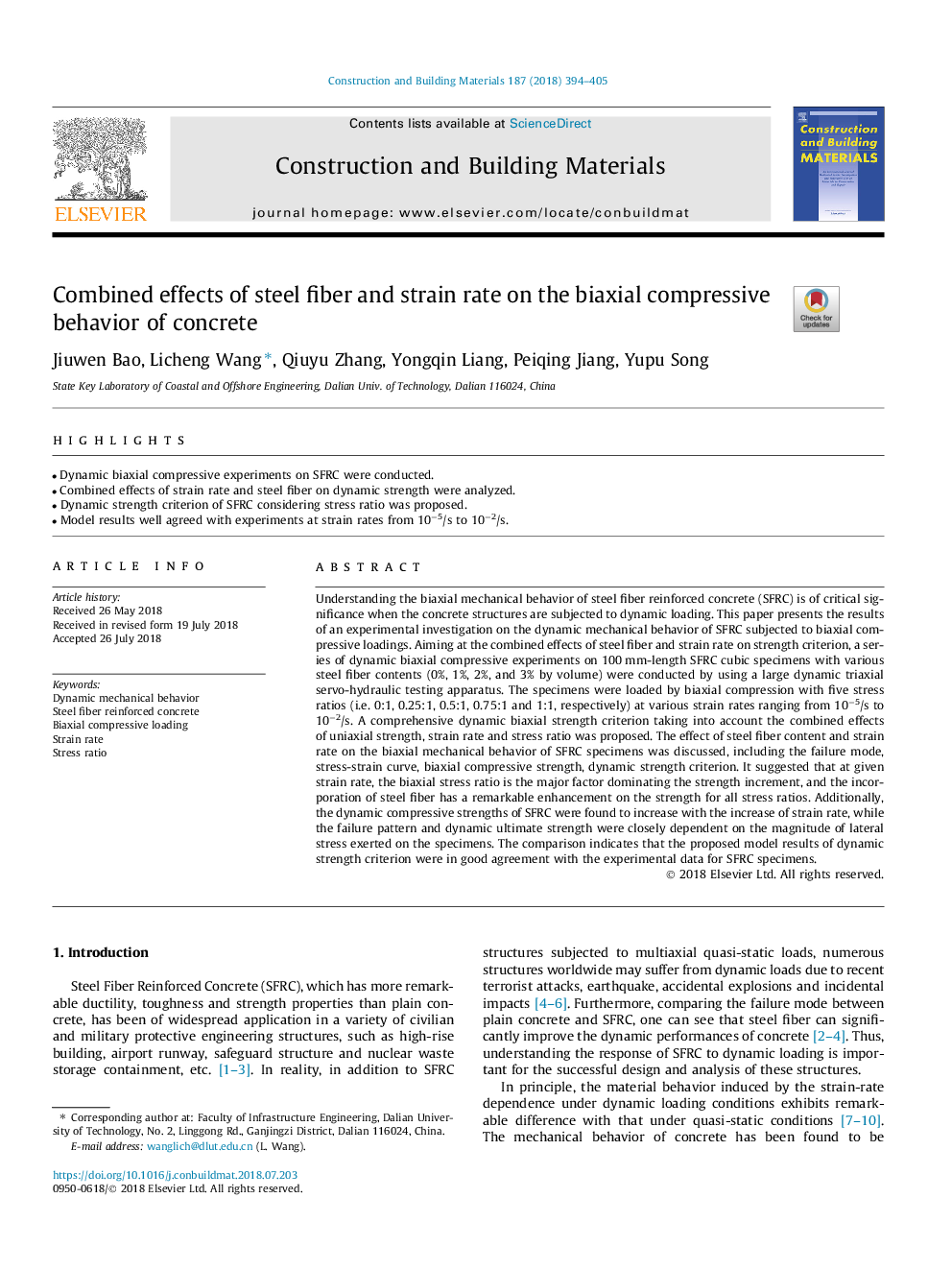| کد مقاله | کد نشریه | سال انتشار | مقاله انگلیسی | نسخه تمام متن |
|---|---|---|---|---|
| 6711367 | 1428719 | 2018 | 12 صفحه PDF | دانلود رایگان |
عنوان انگلیسی مقاله ISI
Combined effects of steel fiber and strain rate on the biaxial compressive behavior of concrete
ترجمه فارسی عنوان
اثرات ترکیبی فیبر فولادی و میزان فشار بر رفتار فشاری دو طرفه بتن
دانلود مقاله + سفارش ترجمه
دانلود مقاله ISI انگلیسی
رایگان برای ایرانیان
کلمات کلیدی
رفتار مکانیکی پویا، بتن آرمه ای فلزی، بارگذاری فشاری دوطرفه، نرخ فشار، نسبت استرس،
موضوعات مرتبط
مهندسی و علوم پایه
سایر رشته های مهندسی
مهندسی عمران و سازه
چکیده انگلیسی
Understanding the biaxial mechanical behavior of steel fiber reinforced concrete (SFRC) is of critical significance when the concrete structures are subjected to dynamic loading. This paper presents the results of an experimental investigation on the dynamic mechanical behavior of SFRC subjected to biaxial compressive loadings. Aiming at the combined effects of steel fiber and strain rate on strength criterion, a series of dynamic biaxial compressive experiments on 100â¯mm-length SFRC cubic specimens with various steel fiber contents (0%, 1%, 2%, and 3% by volume) were conducted by using a large dynamic triaxial servo-hydraulic testing apparatus. The specimens were loaded by biaxial compression with five stress ratios (i.e. 0:1, 0.25:1, 0.5:1, 0.75:1 and 1:1, respectively) at various strain rates ranging from 10â5/s to 10â2/s. A comprehensive dynamic biaxial strength criterion taking into account the combined effects of uniaxial strength, strain rate and stress ratio was proposed. The effect of steel fiber content and strain rate on the biaxial mechanical behavior of SFRC specimens was discussed, including the failure mode, stress-strain curve, biaxial compressive strength, dynamic strength criterion. It suggested that at given strain rate, the biaxial stress ratio is the major factor dominating the strength increment, and the incorporation of steel fiber has a remarkable enhancement on the strength for all stress ratios. Additionally, the dynamic compressive strengths of SFRC were found to increase with the increase of strain rate, while the failure pattern and dynamic ultimate strength were closely dependent on the magnitude of lateral stress exerted on the specimens. The comparison indicates that the proposed model results of dynamic strength criterion were in good agreement with the experimental data for SFRC specimens.
ناشر
Database: Elsevier - ScienceDirect (ساینس دایرکت)
Journal: Construction and Building Materials - Volume 187, 30 October 2018, Pages 394-405
Journal: Construction and Building Materials - Volume 187, 30 October 2018, Pages 394-405
نویسندگان
Jiuwen Bao, Licheng Wang, Qiuyu Zhang, Yongqin Liang, Peiqing Jiang, Yupu Song,
